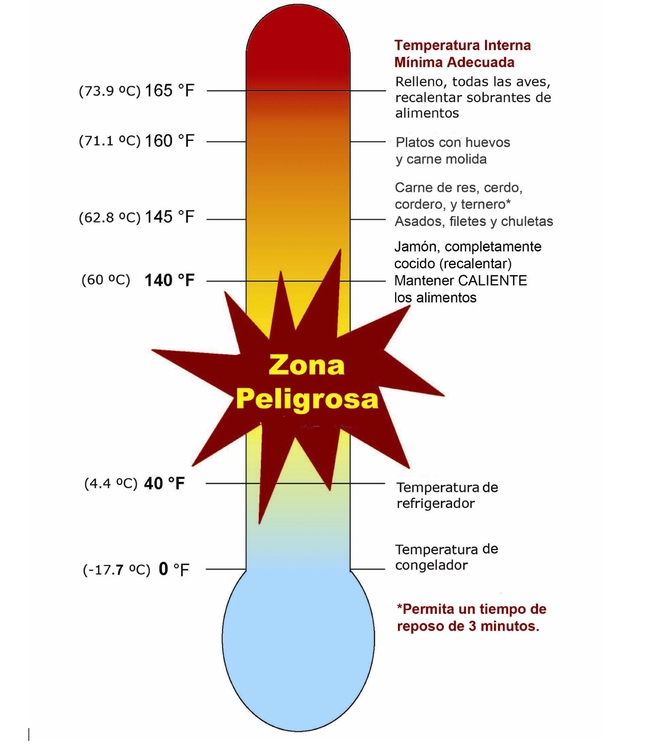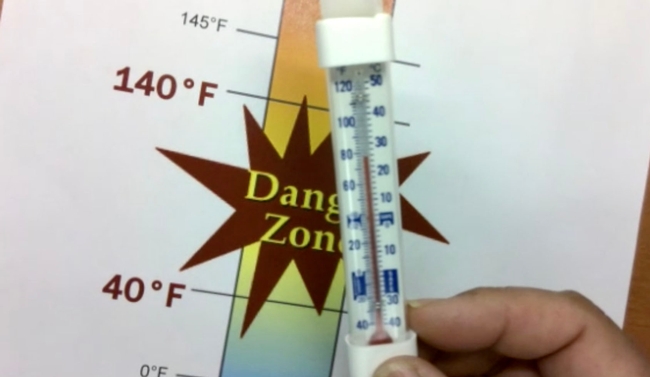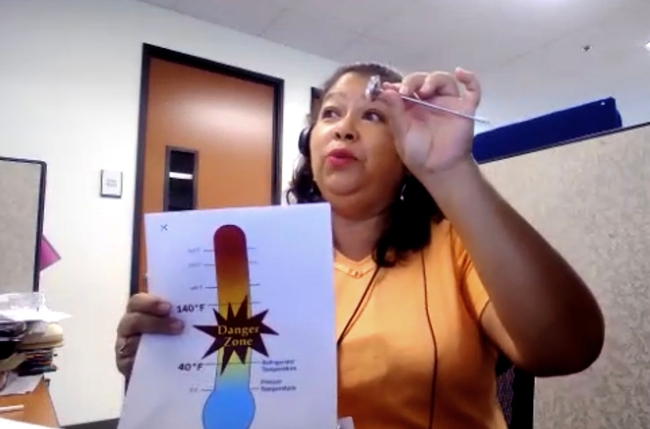Among the snacks that children and adults like the most are, without a doubt, corn-prepared Mexican-style. Whether cooked in water or grilled, just add lemon juice, mayonnaise, grated cheese, and piquin chili, and enjoy! And on top of the tasty delicacies, it is Sunday afternoon, and you are in the park with family and friends. Just be careful and do not be the next victim of food poisoning.
Stomach cramps, diarrhea, and vomiting are some of the most common symptoms after eating food with bacteria, viruses, or parasites. One in 6 people in the United States gets sick from consuming contaminated food, and every year 3,000 die from severe food poisoning although this can occur year-round, in the summer, due to high temperatures, the risk is higher.
"You always have to be careful with food because it should not stay out of the refrigerator for more than two hours. But when summer comes and we know temperatures are going to be 90 Fahrenheit or higher, we need to be more careful," says Alejandrina Orozco, a Cooperative Extension nutrition educator at the University of California, Los Angeles, who, during her free community workshops, in English and Spanish, offers a series of practical tips on how to prevent food poisoning.

"Everyone can ever fall ill from eating a contaminated food," says Orozco, adding that food should not stay out of the refrigerator for more than 2 hours because as time goes by, bacteria multiply.
Bacteria that cause food poisoning multiply faster between 40°F and 140°F. "We know this is the danger zone," says Orozco showing a graph with his pen and indicating that the bacteria that cause food poisoning multiply at tremendous speed between 40 °F and 140 °F and the people most at risk of getting sick are: the elderly, pregnant women, with chronic diseases, children and babies who have a more sensitive immune system.
"It's better to be safe than sorry for someone to get sick," says Orozco in his classes EFNEP, the Expanded Food and Nutrition Education Program that continues to offer online to the community, to immediately start a demonstration with small plastic bags and sweets of multiple colors that represent, in a graphic and easy to understand way, how fast bacteria reproduce in a slice of salmon.
In 10 minutes, the educator explains, raw foods such as fish or chicken have so few bacteria that they do not make anyone sick. But as time goes on: 60, 90, 120 minutes, yes 2 hours, there are dozens of bacteria that are impossible to count.
So in a graphic way, and helped by the plastic bags with the sweets, the educator creates an image that stays in the memory, echoing in the minds of the participants. It is an alarm that could be turned on even in the middle of the after-dinner buzz, to remind everyone that food should not be out of the refrigerator.

1. Clean:
To avoid cross-contamination, wash your hands, utensils, and cutting boards before and after preparing food.
2. Separate:
Avoid cross-contamination: DO NOT use the same cutting board and knife when cutting raw meats and then slicing fruits or vegetables.
Keep raw meat away from foods that are not going to be cooked.
- In the cooler place the meats and raw foods down. Fruits and vegetables are put in containers and the container inside a plastic bag that can be sealed, that prevents ice water, when melted and contaminated with meat juices, DOES NOT penetrate fresh foods such as fruits and vegetables generating cross-contamination.
- In roasted meats: marinate the meat very carefully. The juice where you first put the meat to marinate should be thrown away once the meat goes to the grill. DO NOT make the mistake of re-marinating the meat in the same mixture. If you want a juicy meat, again prepare the mixture to bathe the meat again.
3. Cooking:
Always use a kitchen thermometer to make sure food is cooked at the proper internal temperature: Meat and fish 145°F, poultry 165°F, ground beef (for hamburgers) 160°F
- When food is cooked at the right temperature it reaches a temperature high enough to eliminate harmful bacteria that cause disease.
- Use a food thermometer to check if the food is cooked properly.
4. Cool:
Keep raw foods in the refrigerator or cooler at 40°F or less.
Do not leave food out of the refrigerator. Leftovers should be refrigerated, the more time they spend outside the refrigerator the more bacteria.
5. Discard:
If your food has been left out of the refrigerator for more than two hours, or more than an hour and a half on a summer day on a picnic. Throw it away!
"If you have doubts that any food may be contaminated, better throw it away," Orozco emphasizes. "It's better to be safe than sorry for someone to get sick because when you feel bad it's already scary to eat that again because of how bad you felt."
